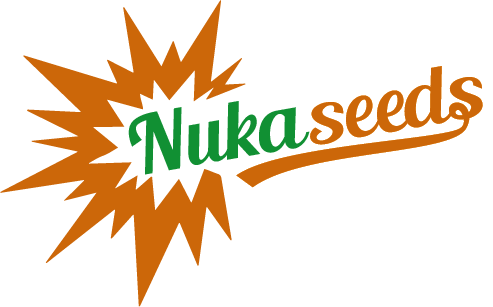English
What are trichomes
When it comes to cannabis plant anatomy, there’s a lot more to it than meets the eye. You’ve probably already wondered about those tiny crystals that always seem to cover the leaves and flowers of your favourite cannabis varieties. They tend to be shiny, sticky and always carry the most amazing aromas. On closer inspection, these frost crystals appear to be large collections of what are called trichomes.
The current definition of a trichome is fine growths or appendages on plants, algae, lichens and some protists. Derived from the Greek word “Tríchōma”, which means “hair growth”, these tiny microscopic mushroom-like protrusions are straight out of a science fiction novel. But they are actually the plants that produce the hundreds of known cannabinoids, terpenes and flavonoids that make our favourite cannabis varieties potent, unique and effective.
The function of trichomes on cannabis
Trichome production can be observed in many plant species throughout nature, taking many different physical forms and serving many different purposes. For example, they are found on some carnivorous plants help to catch prey.
In cannabis, trichomes function as a defence mechanism. When female cannabis plants begin to produce flowers in the wild, they often become vulnerable to various insects and animals as well as to non-living environmental variables such as potentially harmful UV radiation. They act as a deterrent to animals because their bitter taste and strong smell make cannabis flowers unattractive. At the same time, they serve a dual function by protecting plants from damaging winds and even some varieties of fungal growth.
There are different types of trichomes on cannabis
Trichomes come in many shapes and sizes, but three appear most often on cannabis plants :
- Bulbous trichomes are the smallest of the group and appear on the surface of the whole plant. Bulbous trichomes are no larger than 10 to 15 micrometres, which is tiny enough to contain only a handful of cells.
- Capitate sessile trichomes are slightly larger and contain both a head and a stalk. These trichomes are somewhat more abundant than their bulbous brothers, but cannot compete with the abundance and size of the third trichome variety.
- Capitate-stalked trichomes are between 50 and 100 micrometres wide, which means that they are much larger and visible to the naked eye. Their structure consists of a peduncle composed of epidermal and hypodermal cells that develop into a basal cell that attaches to a large gland head. This gland head, held together by a layer of waxy cuticle, serves as the epicentre for the synthesis of cannabinoids and terpenoids.
All three types of trichomes produce cannabinoids, but it is the capitate trichomes that appear in abundance in and around the calyxes of cannabis flowers, producing the highest concentration of essential oils due to their size.
Life cycle and production of trichomes
Cannabinoid synthesis in the trichome begins when cannabis plants enter their flowering phase. As they begin to produce flowers, trichomes form along the outer surface of the above-ground vegetation and begin to transport vacuoles and plastids from their stems to the gland head. At this stage, the cells in the gland head begin to metabolise and form the precursors of what will eventually become cannabinoids.
The rate and concentration at which a cannabis plant produces trichomes depends on both genetics and certain environmental factors. Although plants containing a high concentration of trichomes do not always produce the highest concentration of cannabinoids and/or terpenes, variables such as UV light greatly affect the synthesis of cannabinoids and terpenes in the trichome. As a general rule, plants that receive a broader light spectrum produce higher concentrations of cannabinoids, although in many cases these reactions are variety-specific.
The life cycle of a trichome largely parallels that of the cannabis plant on which it is found, making it extremely valuable for growers to monitor. The life of a trichome can be compared to a parabola, with the apex representing the point where maturation ends and decay begins. Most of the time, trichomes display their maturation on this parabola by changing their opacity from a clear translucent state to a cloudy white and, later, to an amber hue.
This colour transition within a trichome head represents its peak maturity and is generally used by growers as a sign of harvest, as this is the point at which the trichome has reached full maturity and will begin to decay from that point onwards. It is important to understand that not all cannabis varieties are the same and some of them will display different maturation. Nevertheless, trichome colouration remains the standard for determining harvest time for most strains.
Whether alive on a cannabis plant or harvested, trichomes are incredibly volatile and are susceptible to destruction and/or degradation by many catalysts, including but not limited to:
- Oxygen
- Light
- Time
- Heat
- Cold
- Physical contact
Not only are the trichomes themselves at risk of damage when exposed to these elements, but the essential oils they contain may also be degraded. There are ways to significantly slow trichome degradation by carefully handling cannabis flowers during propagation and after harvest. By limiting physical contact to the flowers themselves, trichomes can be preserved longer on the plant. Proper cutting, drying and curing techniques can help keep them viable longer, thus preserving the cannabinoids and terpenoids they contain.
Those seeking to extend the shelf life of trichomes beyond that of the plants from which they are derived often resort to extraction techniques. In this context, extraction can be defined as the process of mechanically or chemically removing the trichomes from the plant itself. There are a myriad of methods and techniques for extracting them from plant material. These methods range from mechanical dry sieving practices that produce “kief” to chemical extractions that use light hydrocarbons such as butane or propane to create waxy, fully melted hash oils. Under the right conditions, trichomes that have been separated and recovered using these methods can be preserved indefinitely.
Cannabis trichomes truly deserve to be applauded for their essential role, not only in protecting a cannabis plant from potential harm, but also in providing a unique manufacturing facility for hundreds of known beneficial medicinal and therapeutic compounds exclusive to this amazing plant. Experienced cannabis growers are accustomed to cultivating with the intention of preserving them. With proper care and dedication, trichome cultivation is and will remain the future of discovering the vast mysteries of cannabis’ medicinal and therapeutic qualities.
Related articles :
Published by Sakul
23/03/2023choose and buy cannabis seeds from our offer
our pleasure





























